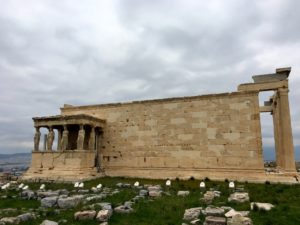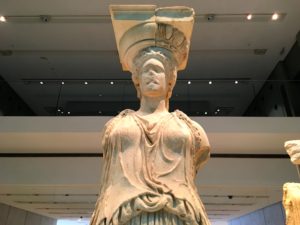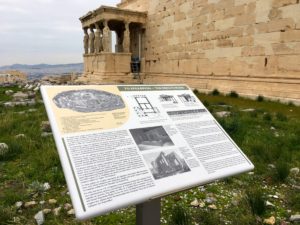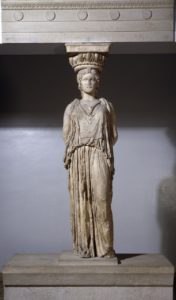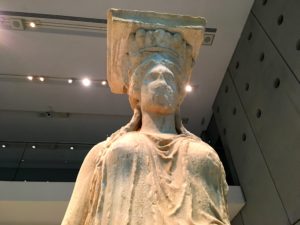CARYATIDS OF ERECHTHEION
The Erechtheion is a temple located on the North side of Acropolis of Athens.
It’s named after the demi-god Erechtheus, the mythical Athenian king, was conceived as a suitable structure to house the ancient wooden cult statue of Athena.
It’s dedicated to Athena and Poseidon. The temple as seen today was built between 421 and 406 BC.
The Erechteion has two porches or porticos, on it’s north and south sides.
The south porch is the better known of the two. In the place of the columns there are six sculpted Korai, the Caryatids, supported the roof. Although the name of their creator is unknown, it is thought that they are from the workshops of Alkamenes, a pupil of Pheidias.
The substitution of sculpted women for columns was not altogether rare in Greek architecture of the archaic period (7th – 5th century BC) The statues of the Erechtheion, in an inscription on the temple itself, were simply called Korai (maidens). The name “Caryatids” was given in later years because of their association with the young women of Karyai in Laconia, who used to perform a devtional dance in honor of the goddess Artemis.
The Greek term karyatides literally means “maidens of Karyai” an ancient town in Laconia. Karyai was an ancient town near the border with Arcadia, located on the road from Tegea to Sparta. Know for the temple of the Artemis where the Lacedaemonian maidens held chorus dances.
The temple in Karyai dedicated to the goddess Artemis was called Artemis Karyatis. Women in Karyai they were dancing by balancing a basket on their heads in honour of Artemis. Karyai women were moving as if they were dancing plants.
Sculpted female figures called Caryatids used in architecture, were named after these maidens from Caryae. The modern village Karyes was named after this ancient town.
Five statues of Carytaids are located today in the Museum of Acropolis, while the sixth is in the British Museum.


